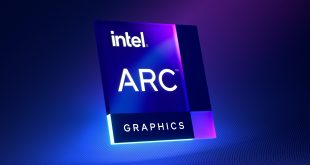We have discussed Fermi's new technology already, including the PolyMorph tessellation engine and improved antialiasing as well as ray tracing with OptiX technology. The Fermi architecture replaces the traditional geometry processing architecture at the front end of the graphics pipeline with an entirely new distributed parallel geometry processing architecture that is implemented using multiple ‘PolyMorph Engines'. Each of these PolyMorph Engines includes a tessellation unit as well as an attribute setup unit and geometry processing units. Each SM has its own dedicated PolyMorph Engine.
In the past, GeForce cards had to rely on a single Raster Engine. Fermi brings more to the table. Much more. The GTX 470/480 have four each, the GTX 465 has three.
Tessellation and all its supporting stages are performed in parallel on GTX 400 series graphics processing units, which helps to create much higher levels of geometry throughput.
There’s something else as well. The GF100 compute architecture, was created with one eye on Ray Tracing. God’s own rendering engine (The Universe) uses an infinite number of photons, bouncing back and forth for billions of years, to create a pretty realistic environment. KitGuru has been looking for years and, without copious amounts of ‘falling down water’, we’ve yet to see a crack in the rendered image.
The GTX480, 470 and 465, support recursion in hardware, enabling efficient ray tracing and many other advanced graphics algorithms. The enhanced L1 and L2 caches improve ray tracing efficiency by accelerating performance of fine grained memory accesses. The L1 cache improves memory locality for adjacent rays and the L2 cache amplified the bandwidth to the framebuffer.
Focusing all this engineering effort on Ray Tracing may or may not be smart. Given that we’re never going to trace every photon in a scene, Ray Tracing is a game of limiting/culling/approximating. On that basis, it may or may not ever overtake other methods for realism. BUT. And it’s a big BUT. Intel has demonstrated a lot of high-powered Ray Tracing intention – which means the next generation of games consoles could have Ray Tracing built in. nVidia is taking no chances, hence the effort.
As we also mentioned before the GF100's GigaThread engine reduces context switch time to approximately 20 microseconds, which makes it possible to execute multiple compute and physics kernels for each frame. Some games, for instance, may use Direct X 11 to render a scene then switch to CUDA for selective ray tracing, make a call to the Direct Compute kernel for post processing and then perform fluid simulations with PhysX. These are executed in parallel, enabling maximum utilization of CUDA cores. We might have to wait a few months for the full force of the Ashu Rege inspired TWIMTBP titles to make full use of these features and workflow, but they will. That, in itself, is very interesting. Remember, the gaming industry would die without TWIMTBP according to Rege, and that sounds serious.
The Zotac GeForce GTX 465 arrives in a typically ‘over-the-top' designed Zotac box – with some mythic monster adorning the front [Norbert Kuperjans taking his morning shower, surely? – Ed].
The bundle includes power converter cables, several adapter cables (mini HDMI to HDMI) as well as a manual, instructions on fitting and a driver CD. Also, it has to be noted, there is a simple cartoon warning not to touch Fermi cards when they have been turned on for a while. You have been warned. By nVidia.
The card ships with a protective clear cover on the the top of the cooler. It is quite unremarkable with only an accented ‘heart beat' graph taking center stage.
The rear of the card follows the PCB design of the GTX 470 series.
As noted earlier, the card requires 2 x 6pin PCI power connectors to function. Nothing out of the ordinary with this configuration and any half decent power supply will supply the necessary wattage with ease.
The back features two very attractive yellow DVI coloured ports. On the left is a mini HDMI connector – there is an adapter supplied to convert this to standard size HDMI for a line out direct to your TV or Monitor.
 KitGuru KitGuru.net – Tech News | Hardware News | Hardware Reviews | IOS | Mobile | Gaming | Graphics Cards
KitGuru KitGuru.net – Tech News | Hardware News | Hardware Reviews | IOS | Mobile | Gaming | Graphics Cards








